
摄影曝光口诀
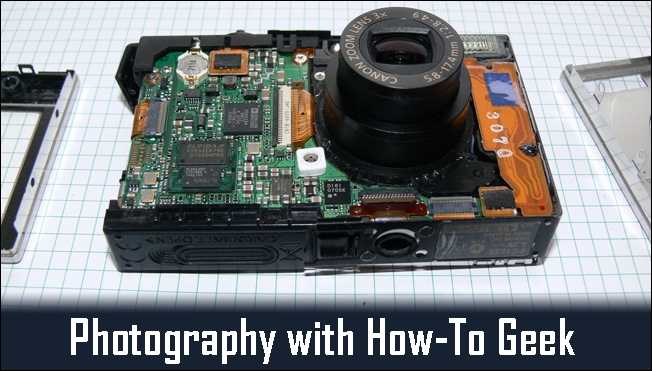
Most of us are guilty of coasting on our digital camera’s “auto” settings. But with a few quick lessons on the basic elements of proper exposure, you can learn how to be a more effective photographer, with or without it.
我们大多数人都对数码相机的“自动”设置不满意。 但是,通过一些有关适当曝光的基本要素的快速课程,您可以了解如何成为一个有效率的摄影师(无论有没有)。
Photography, as we learned in the last installment of “Photography with How-To Geek,” is all about light. This time around, we’ll learn more about the various parts of what goes into producing a properly exposed picture, so you can better understand what your auto settings are doing, or better yet, understand how to get those results with your own manual settings.
正如我们在“如何使用极客摄影”的最后一部分中了解到的,摄影全都与光有关。 这次,我们将详细了解生成适当曝光的图片的各个方面,因此您可以更好地了解自动设置的作用,或者更好地了解如何通过自己的手动设置获得这些结果。
什么是曝光? (What is an Exposure?)
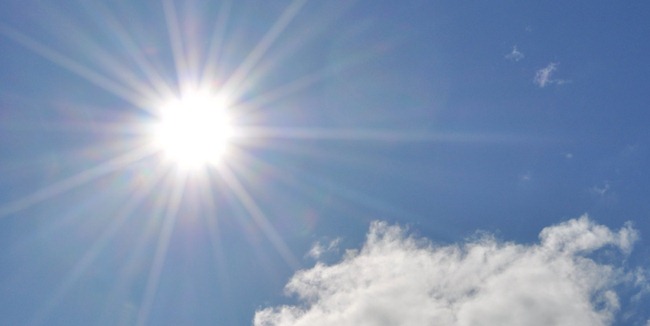
Roughly defined, an exposure occurs when light sensitive material is introduced to a light source. This can be either briefly, in the case of SLR shutters that open and close in the matter of a second, or over long times, in the case of pinhole cameras that use less light sensitive films. The light records what the camera “sees,” and controlling and reacting to that light is a good photographer’s job.
粗略地定义,当将光敏材料引入光源时发生曝光。 对于单反快门可以在一秒钟内打开和关闭的情况,这可以是短暂的,或者对于使用光敏性较差的胶片的针Kong相机来说,可以是很长一段时间。 灯光记录了相机的“可见”,并且控制灯光并对之做出React是摄影师的好工作。
The main ways this is done is using these major elements of exposure—the most obvious ways to control the light hitting your digital camera’s sensor. Let’s briefly look at these controls, and how you can use them to your advantage.
完成此操作的主要方法是使用这些主要的曝光元素-最明显的方法来控制射到数码相机传感器上的光。 让我们简要地看一下这些控件,以及如何利用它们发挥自己的优势。
ISO (International Organization for Standardization)
ISO(国际标准化组织)

That’s not a typo—ISO is not an acronym for those three words, but rather taken from a greek word meaning “equal.” ISO is a non-government worldwide organization that sets standards throughout the world. They are most well-known for two common standards: the ISO filetype for CD images, and the standards for light sensitivity for photographic film and light sensors.
这不是打字错误-ISO并不是这三个词的首字母缩写,而是取自希腊语,意思是“相等”。 ISO是在全球范围内制定标准的非政府组织。 它们以两个通用标准而最为著名:CD映像的ISO文件类型,以及胶卷和光传感器的感光度标准。
Light sensitivity is so often referred to as ISO, many photographers don’t know it as anything but. ISO is a number, ranging from 50 to 3200 in common digital cameras, that represents how much light it takes to get a proper exposure. Low numbers can be referred to as the slow settings, and require more light or longer exposure times to record an image. Sensitivity increases as the ISO number goes up—higher ISO means you can take pictures of objects that move faster without blurring, using blazing fast shutter speeds to capture hummingbird wings and other fast moving objects.
感光度通常被称为ISO,许多摄影师对此一无所知。 ISO是一个数字,在普通的数码相机中范围从50到3200,它表示获得适当曝光所需的光量。 较低的数字可以称为慢速设置,需要更多的光线或更长的曝光时间才能记录图像。 感光度随ISO数值的增加而增加-较高的ISO意味着您可以使用超快的快门速度捕捉蜂鸟的翅膀和其他快速移动的物体来拍摄运动更快的物体而不会模糊的照片。

High ISO number settings are referred to as “fast” for this very reason. A normal shutter speed at a very fast ISO like 3200 would turn a “normal” sunlit scene into a bright, almost entirely white photograph. Balance and careful forethought is required when adjusting ISO manually, and there are a lot of trade offs. For instance, many darkly lit situations require the faster ISO settings to turn small amounts of light available in into a decent image. However, high ISO settings often lead to grainy images, in film as well as in digital photography. The best detail possible is achieved at lower ISO settings—it is also the best way to combat the previously mentioned grain texture.
因此,将高ISO编号设置称为“快速”。 在非常快的ISO(例如3200)下正常的快门速度会将“正常”的阳光照射场景变成明亮的,几乎全白的照片。 手动调整ISO时需要保持平衡和谨慎的考虑,并且需要权衡取舍。 例如,在许多昏暗的情况下,需要更快的ISO设置才能将少量可用的光转换为体面的图像。 但是,高ISO设置通常会在胶片以及数码摄影中导致颗粒状图像。 在较低的ISO设置下可以获得最佳的细节-这也是抵御先前提到的纹理的最佳方法。
ISO is measured in “stops,” each iteration twice as sensitive to light as the last one. ISO 50 is 1/2 as sensitive as ISO 100, and 200 is twice as sensitive as ISO 100. The standard numbers occur in that multiple, as well: ISO 50, 100, 200, 400, 800, 1600, 3200, etc.
ISO以“ 光圈 ”来衡量,每次迭代对光的敏感性是最后一次的两倍。 ISO 50的感光度是ISO 100的1/2,而200则是ISO 100的两倍。标准数字也以ISO的倍数出现:ISO 50、100、200、400、800、1600、3200等。
Shutter Speed, aka Length of Exposure
快门速度,又称曝光时间


While “light sensitivity” is a more abstract idea, Shutter Speed is a much more tangible concept to wrap your mind around. The basic concept is how many seconds (or, most likely, fractions of a second) the light sensitive material is exposed to the light. Like ISO, shutter speed can be thought of as broken down into stops, each one different from the last one by a factor of two. For instance, 1 second allows twice as much light as 1/2 second, and 1/8 allows half the light 1/4 second allows.
虽然“光敏”是一个更抽象的概念,但“快门速度”是一个更切实的概念,可以让您全神贯注。 基本概念是将光敏材料暴露在光线中几秒钟(或者很可能是几分之一秒)。 像ISO一样,可以将快门速度分解为多个光圈 ,每个光圈与最后一个相差2倍。 例如,1秒允许的光量是1/2秒的两倍,而1/8允许的光量的一半为1/4秒的光。
Shutter speeds are strange—less orderly compared to ISO numbers, with the common standard settings broken down with fractions that seem a little off: 1 sec, 1/2 sec, 1/4 sec, 1/8 sec, 1/15 sec, 1/30 sec, 1/60 sec, 1/125 sec, 1/250 sec, 1/500 sec, and 1/1000 sec. Each stop, as said, is roughly different from the last or next by a factor of two.
快门速度很奇怪-与ISO编号相比,顺序不那么顺畅,常见标准设置的细分程度似乎有些差:1秒,1/2秒,1/4秒,1/8秒,1/15秒, 1/30秒,1/60秒,1/125秒,1/250秒,1/500秒和1/1000秒。 如前所述,每个停靠点与最后一个或下一个停靠点之间的差额约为2。
Adjust your shutter speed based on the speed of the objects in your scene or the stability of your camera mount. The ability to photograph quick moving objects without blur is called the stopping action, and properly set shutter speeds will help you achieve this. By a general rule of thumb, quicker shutter speeds (1/250 sec to 1/60 sec) allow for on-the-go, hand-held photography, while anything slower may require a tripod to combat blur. Any long exposures of 1 second + will require a tripod or sturdy mount to capture without blur.
根据场景中物体的速度或相机支架的稳定性来调整快门速度。 拍摄快速移动的物体而不会模糊的功能称为停止动作 ,正确设置快门速度将帮助您实现这一目标。 根据一般经验法则,较快的快门速度(1/250秒至1/60秒)可以进行移动手持摄影,而较慢的快门可能需要三脚架才能消除模糊。 1秒以上的任何长时间曝光都需要三脚架或坚固的安装座才能捕捉而不会模糊。
光圈(尽其所能,因为它可以) (The Aperture (Does What it Must, Because it Can))
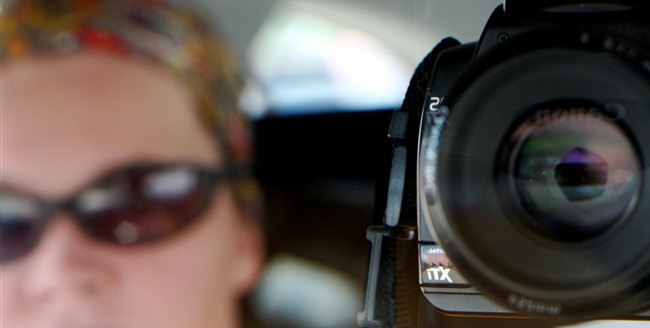
Briefly discussed in our last “Photography with How-To Geek” article, the aperture of your lens is similar to the pupil in your eye. It has settings for dim lighting to gather lots of light, and settings for bright lighting to block all but the amount necessary. And like shutter speed and ISO settings, apertures have regular stops, each one different by a factor of two. Many cameras will have half and quarter stop settings, but the generally agreed upon full stops are f/1, f/1.4, f/2, f/2.8, f/4, f/5.6, f/8, f/11, f/16, f/22, etc. More light is blocked as the number increases, as the aperture closes tighter and tighter the smaller the dividing number becomes.
在我们的上一篇“如何使用极客摄影”一文中进行了简要讨论,镜头的光圈与眼睛中的瞳Kong相似。 它具有用于昏暗照明的设置以聚集大量的光,以及用于明亮照明的设置以阻挡除必要量以外的所有光。 像快门速度和ISO设置一样,光圈也有规律的光圈,每个光圈相差2倍。 许多相机会设置半停和四分之一停,但通常同意的全停是f / 1,f / 1.4,f / 2,f / 2.8,f / 4,f / 5.6,f / 8,f / 11, f / 16,f / 22等。随着光圈数的增加,更多的光会被遮挡,光圈越紧,分度数就越小。

One of the interesting by-products of smaller aperture settings is that your depth of field increases as your aperture shrinks. Simply put, depth of field is the amount of the photographed object(s) that recede in space that can be successfully focused on. Increasing your f-number will allow you to keep more and more of your subject matter in focus when you photograph it. For instance, pinhole cameras have nearly infinite depth of field, as they have the smallest of possible apertures—literally a pinhole. Smaller apertures reduce the amount of diffracted light that enters the sensor, allowing for greater depth of field.
较小的光圈设置有趣的副产品之一是,随着光圈的缩小,景深会增加。 简而言之,景深是指可以成功聚焦在空间中的被拍摄物体的数量。 增加f值将使您在拍摄时将越来越多的主题聚焦。 例如,针Kong相机具有几乎无限的景深,因为它们具有最小的光圈-实际上是针Kong。 较小的Kong径可减少进入传感器的衍射光量,从而实现更大的景深。
色温和白平衡 (Color Temperature and White Balance)

In addition to these three controls, you’ll find that the quality of light you photograph in can drastically affect the final image you produce. What may be the most important quality of light beyond intensity is “Color Temperature.” It is rare that the lighting you’ll encounter will cast red, green, and blue spectrums of light in equal amounts to produce perfectly balanced, 100% white light. What you’ll see, more often than not, are bulbs that lean towards one color or another—that is what we mean by the so-called color temperature.
除了这三个控件之外,您还将发现拍摄的光的质量会严重影响最终产生的图像。 超出强度的最重要的光质量是“ 色温 ”。 很少会遇到等量的照明会投射等量的红色,绿色和蓝色光谱,以产生完全平衡的100%白光。 您会经常看到灯泡偏向一种或另一种颜色,这就是所谓的色温。
Color Temperature is measured in degrees using the Kelvin scale, a standard scale used in Physics to measure stars, fires, hot lava, and other incredibly hot objects by their color. While incandescent light bulbs don’t literally burn at 3000 degrees Kelvin, they emit light that is of similar quality to objects that do burn at that temperature, so the notation was adopted to label and categorize the light quality from various common sources.
色温是使用开尔文标度(度数)来度量的, 开尔文标度是物理学中用于按星,火,热熔岩和其他异常热的物体的颜色来测量其颜色的标准标度。 尽管白炽灯泡实际上不会在3000开氏度下燃烧,但它们发出的光的质量与在该温度下燃烧的物体的质量相似,因此采用了这种标记来标记和分类来自各种常见光源的光质量。
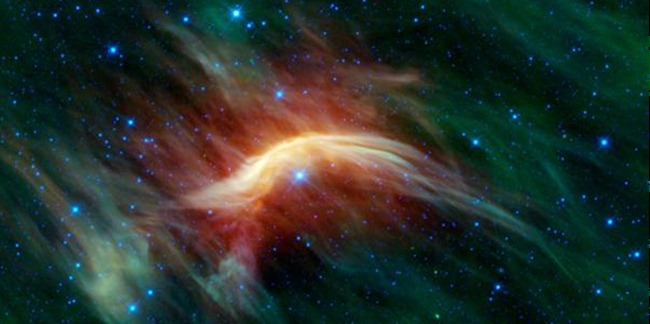
Cooler temperatures, in the range of 1700 K, tend to burn red to red-orange. These can include natural-light sunsets and firelight. Warmer temperature light, such as your standard home soft white light bulb will burn somewhere around 3000K, and are often marked on the packaging. As the temperatures go up, the light becomes whiter (pure white ranging from 3500-4100K) with hotter temperatures trending toward bluer lights. Unlike our normal perception of “cool” colors versus “warm” colors, the hottest temperatures on the Kelvin scale (say 9000K) cast the “coolest” light. You can always think of lessons learned from astronomy—red and yellow stars burn cooler than blue stars.
较低的温度(在1700 K范围内)趋于燃烧成红色到橘红色。 其中包括自然采光的日落和火光。 温暖的温度灯,例如您的标准家用柔光白灯泡,会在3000K左右的地方燃烧,并经常在包装上标明。 随着温度的升高,光变得更白(纯白色,范围为3500-4100K),而温度越高,光越趋向蓝。 与我们通常对“冷”色与“暖”色的正常感知不同,开尔文刻度上最热的温度(例如9000K)投射出“最冷”的光。 您总是可以想到从天文学中汲取的教训-红色和黄色的星星比蓝色的星星燃烧的温度低。
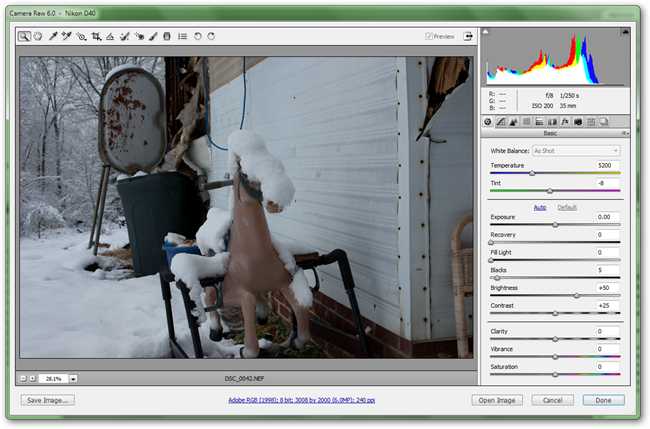
The reason that this is important, is that your camera is sensitive to all of these subtle color shifts. Your eye is not very good at picking them out—but the sensor of your camera will turn an image blue or yellow in a fraction of a second if it isn’t shot at the proper color temperature. Most modern cameras have settings for “White Balance.” These have a setting for “Auto White Balance” or AWB, which is generally pretty good, but can sometimes be wrong. There are many ways to measure the color of light, including some on-camera light meters, but the best way to overcome problems with white balance is simply to shoot in your Camera’s raw file, which works independently of White Balance, capturing raw data from the light, and allowing you to adjust your Color Temperature/White Balance on your computer, long after shooting.
之所以重要,是因为您的相机对所有这些细微的色移都非常敏感。 您的眼睛无法很好地将它们挑出来,但是如果没有在适当的色温下拍摄,相机的传感器会在几分之一秒内将图像变成蓝色或黄色。 大多数现代相机都有“白平衡”的设置。 它们具有“自动白平衡”或AWB的设置,通常不错,但有时可能会出错。 有很多方法可以测量光的颜色,包括一些相机上的测光表,但是克服白平衡问题的最好方法是简单地在相机的原始文件中拍摄 ,该文件独立于白平衡工作,从中获取原始数据。拍摄后很长一段时间内,您可以使用该指示灯点亮并调整计算机的色温/白平衡。
These controls, used in various combinations, can give you drastically different results. Each setting has its own trade offs! You’ll be the most successful if you combine them keeping in mind the basic principal of stops—that removing one full stop from one setting and adding one to another will net similar results, as they allow for similar amounts of light and exposure. In other words, at ISO 100, 1/30 sec shutter speed at f/8 is roughly the same exposure of ISO 100, 1/15, f/11. Keep that in mind when you’re shooting, and you’ll be one step closer to becoming a master photographer.
这些控件以各种组合使用,可以为您带来截然不同的结果。 每个设置都有其自身的取舍! 如果您将它们结合起来并牢记光阑的基本原理, 那么您将是最成功的-从一个设置中删除一个光阑并在另一个设置中添加一个光阑将获得相似的结果,因为它们允许相似的光照和曝光量。 换句话说,在ISO 100时,f / 8的1/30秒快门速度与ISO 100、1 / 15,f / 11的曝光大致相同。 拍摄时请记住这一点,您将成为一名专业摄影师,离这一步仅一步之遥。
Image Credits: Canon Lxus Disassembled by www.guigo.eu, available under Creative Commons. Beautiful Skies by Photography By Shaeree, available under Creative Commons. Hummingbird by leilund, both available under Creative Commons. Aperture by natashalcd, available under Creative Commons. Zeta Ophiuchi image by NASA, assumed public domain and fair use.
图片来源:Canon Lxus,由www.guigo.eu分解 ,可在Creative Commons下获得 。 Shaeree摄影所著的“美丽的天空”,可参见创用CC 。 leilund的 Hummingbird(蜂鸟),均可以在Creative Commons下获得 。 natashalcd提供的Aperture,可在“ 知识共享”下找到。 美国国家航空航天局的Zeta Ophiuchi图片,假定为公共领域并且合理使用。
翻译自: https://www.howtogeek.com/63770/improve-your-photography-by-learning-the-elements-of-exposure/
摄影曝光口诀





















 1568
1568











 被折叠的 条评论
为什么被折叠?
被折叠的 条评论
为什么被折叠?








